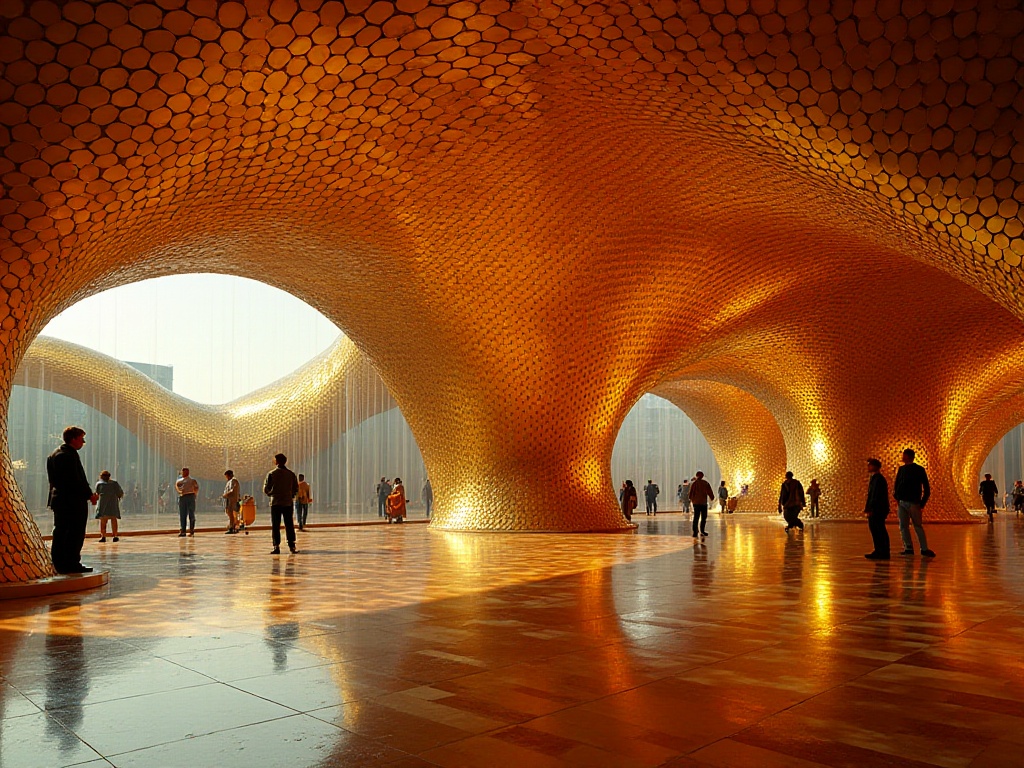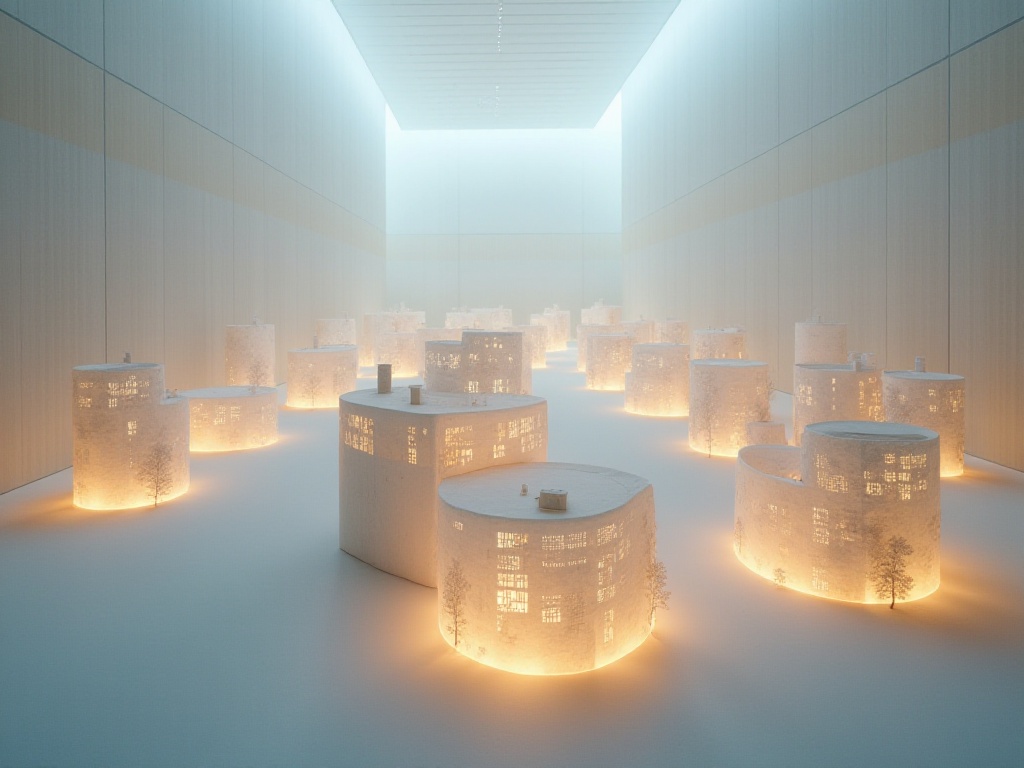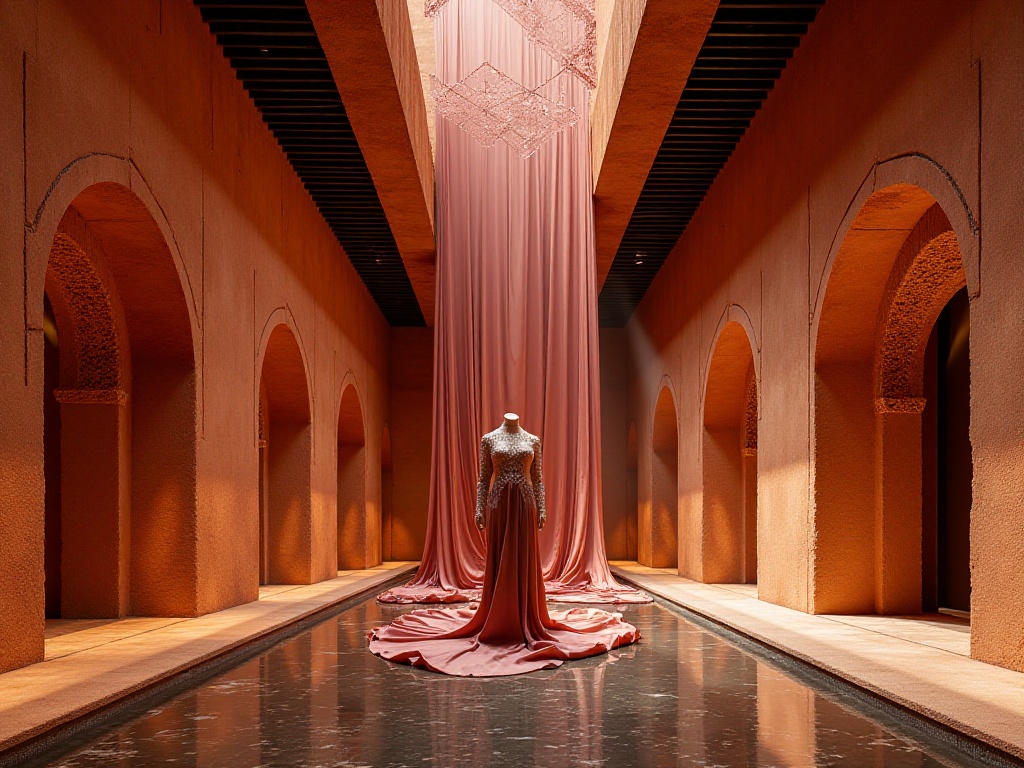First Encounter with Rodin
I'll never forget that drizzly Paris afternoon. Standing at the entrance of the Rodin Museum, my heart was racing with excitement. The elegant facade of the Hôtel Biron appeared and disappeared in the rain, moss covering its ancient stone walls, the air filled with the fragrance of soil and grass. This 18th-century noble mansion, where Rodin spent his later years living and creating, has now become a sanctuary showcasing the sculptor's life's work.
Walking through the Rodin Museum's garden, bronze sculptures gleamed in the rain. Raindrops flowed down the sculptures, seeming to coat these eternal artworks with a layer of flowing silver. Every corner of this museum tells Rodin's story, where he spent his final years, concentrating his life's learning in this place. The elegant architectural style of the Hôtel Biron forms a unique contrast with Rodin's passionate artistic style, yet they blend together perfectly.
Standing in the rain, gazing at this building housing countless artistic treasures, I couldn't help but imagine scenes of Rodin creating here. How did he pour his sweat here, how did he find inspiration here, and how did he infuse his understanding of life and art into each work? These questions kept swirling in my mind, urging me to quickly enter this temple of art.
Temple of Art
Pushing open the museum's heavy wooden doors, the first sight that caught my eye was the famous "The Thinker." It stands quietly in the center of the exhibition hall, its profound gaze seeming to pierce through time and space. This reminded me of the shock I felt when I first saw this work in an art textbook. Seeing it in person now, that sense of awe was beyond words. The bronze muscle lines appeared particularly powerful under the lights, the thinker's slightly furrowed brow seeming to express some deep philosophical contemplation.
The creation process of "The Thinker" itself is legendary. This sculpture was initially created as part of "The Gates of Hell," later becoming an independent work after being enlarged. To perfectly present the state of human contemplation, Rodin made countless modifications and adjustments during the creation process. He even had models maintain the same pose for hours just to capture that moment's spirit. This passionate pursuit of art caused a huge sensation in the art world at the time.
Every corner of the exhibition hall has been carefully arranged, with natural light falling from the glass skylights in the dome, perfectly blending with artificial lighting to create the optimal viewing effect for each work. The text descriptions on the walls include both professional art historical interpretations and Rodin's own creative notes, allowing visitors to understand more deeply the stories behind each work.
I lingered for a long time in front of "The Thinker," observing every detail of this work. The texture of muscles, subtle changes in expression, the posture of the body, all demonstrate Rodin's profound understanding of human anatomy. This is not just a sculpture, but a perfect portrayal of the essence of human thought. No wonder this work has become a symbol of philosophical contemplation, having such far-reaching influence globally.

Walking in the Garden
What makes this museum most unique is its breathtaking garden. Rather than calling it a museum garden, it's more like an outdoor art gallery. I've noticed many visitors overlook this part, but the garden is actually an important component of Rodin's artistic world. Every inch of land has been carefully planned, perfectly combining natural scenery with artworks.
In spring, roses bloom throughout the garden, pink and white flowers dotting the verdant lawn, adding a touch of softness to the bronze sculptures. Under the summer sun, the shadows cast by the sculptures dance on the lawn, seeming to tell their own stories. In autumn, fallen leaves lay a golden carpet, creating a unique visual effect with the sculptures. Even in winter, the bare branches and sculptural lines can produce a distinctive artistic charm.
Every sculpture in the garden has been carefully placed, either hidden among shrubs or standing on open lawns, with each position chosen after careful consideration. The interaction of these works with the natural environment helps people better understand how Rodin drew inspiration from nature. For example, "The Bronze Age," whose bronze surface glimmers in the sunlight as if narrating the progress of human civilization.
Walking along the garden paths, I noticed every turn holds its own wonder. Sometimes an elegant human figure sculpture suddenly appears in view, sometimes a dynamic group of figures hides behind the trees. This surprising layout makes the visit particularly interesting. The garden also has rest areas where visitors can sit on benches, appreciating the artworks while experiencing nature.
The garden's lighting design is especially worth mentioning. At dusk, the garden's spotlights gradually illuminate, creating a dreamlike atmosphere for the sculptures. Light and sculpture shadows interweave on the ground, creating visual effects rarely seen during the day. At this time, the garden seems to enter another dimension, with the sculptures appearing more mysterious and moving in the night.

The Code of Creation
During my visit to the museum, I gradually understood Rodin's creative philosophy. Unlike traditional academic sculptors, his works are full of unique personal style and strong emotional expression. For example, his most representative work "The Gates of Hell," a 6-meter-high bronze door covered with more than 180 figures. This gate crystallized 37 years of Rodin's efforts, being his artistic interpretation of Dante's "Divine Comedy."
Every detail speaks of humanity's struggle and redemption. The figures on the door are either twisted, sorrowful, or desperate, displaying various states of the human soul. Rodin constantly modified and perfected during the creation process, with some figures later developing into independent works, such as "The Thinker" and "The Kiss." This creative method shows Rodin's persistent pursuit of art; he wasn't satisfied with surface resemblance but sought to dig deep into human nature.
During the creation of "The Gates of Hell," Rodin broke many rules of traditional sculpture. He boldly used different proportional relationships, making the figures create strong visual impact. Some figures were deliberately made unclear, others extremely exaggerated, all to express intense emotions. These innovative techniques caused great controversy at the time, but it was precisely these breakthrough expressions that gave Rodin's works eternal artistic value.
Rodin's creative process was also unique. He would let models move freely in his studio, capturing their most natural states. He believed that real life states could move people's hearts more than deliberately posed postures. This pursuit of natural states is thoroughly expressed in his works. For example, the young person's stretched body in "The Bronze Age" perfectly displays the natural beauty of the human body.
When creating figure sculptures, Rodin paid particular attention to detail. He would carefully study every muscle of the human body and the movement patterns of every joint. This deep study of anatomy made his works both realistic and full of power. He also particularly emphasized the use of materials, skillfully utilizing different surface treatment methods to express different texture effects.

Collection Highlights
Besides Rodin's own works, the museum also houses the art collection he gathered throughout his life, including ancient Greek sculptures and Egyptian artifacts. These collections allow us to glimpse this art master's aesthetic preferences and artistic pursuits. Rodin was a passionate collector, collecting not only sculptures but also paintings, drawings, and ancient artworks. These collections demonstrate his broad artistic interests and profound artistic cultivation.
Particularly interesting is how the museum has recreated Rodin's studio scene. Entering this space, one can almost see the master's figure creating here. The studio displays tools he used, unfinished works, and various materials, all precious resources for understanding Rodin's creative process. Drawings he collected hang on the walls, small sculptures sit on tables, all showing his working environment and creative methods.
The museum's collection also includes numerous photographic materials. These photographs record scenes from Rodin's life, his creative process, and his interactions with contemporary artists. Through these visual materials, we can better understand Rodin's artistic career and his historical context. Especially those photos of the creative process, showing us every stage from conception to completion of artworks.
Besides artworks, the museum preserves many of Rodin's letters and manuscripts. These written materials record his artistic thoughts, life insights, and exchanges with other artists. Through these materials, we can more deeply understand Rodin's inner world and artistic pursuits. Some manuscripts even have his sketches and annotations, all valuable materials for studying Rodin's art.
The museum's collection continues to expand. Besides permanent exhibitions, they regularly hold special exhibitions, showing temporarily borrowed works or newly discovered materials. These exhibitions provide us more opportunities to understand Rodin and his era. Each special exhibition attracts many art lovers, becoming an important event in Paris's cultural life.

Visiting Tips
If you plan to visit the Rodin Museum, I suggest going on weekdays when there are fewer visitors. The museum receives over 700,000 visitors annually, and weekends are often crowded. To fully experience the artistic atmosphere, it's best to reserve half a day. Morning light is best for visiting indoor galleries, while afternoons can be spent slowly appreciating works in the garden.
It's best to avoid visiting at noon when there are most visitors and strong sunlight, which isn't conducive to viewing. If you want to take photos, it's recommended to choose morning or evening times when the light is most suitable for photography. However, note that photography isn't allowed in some exhibition halls, so be sure to follow museum regulations.
The museum's layout is well-thought-out; it's recommended to follow the exhibition route to better understand the development of Rodin's artistic creation. Each exhibition hall has detailed explanatory text; it's recommended to read carefully to better understand the background and meaning of the works. If time permits, spend more time in front of each work, carefully observing details.
Weather is also an important consideration for visiting. On sunny days, it's recommended to spend more time in the garden, appreciating the beauty of sculptures in sunlight. If it rains, don't feel disappointed - the Rodin Museum has a special charm in the rain. The effect of raindrops on sculptures is special, and there are fewer visitors on rainy days, allowing for quieter art appreciation.

Helpful Notes
The museum's audio guide provides Chinese service for 6 euros. However, I personally recommend doing homework in advance and slowly appreciating each work yourself. After all, art appreciation is a very personal thing. You can learn about Rodin's life and major works online in advance, making the visit more targeted.
The museum has a café and gift shop. The café is well-located, allowing you to enjoy coffee while appreciating the garden view. The gift shop has many fine art reproductions and books, suitable for purchasing as souvenirs. If you want to buy reproductions, it's recommended to choose after completing the visit, allowing better judgment of which works you truly like.
Pay attention while walking during the visit, as some exhibits are placed in special positions - be careful not to bump into them. Some areas of the museum floor can be slippery, especially on rainy days, so mind your safety. If bringing children, pay special attention to supervision and don't let them touch the exhibits.
The museum staff are all professional and friendly; feel free to ask questions anytime. They can provide not only visiting guidance but also answer professional questions about the works. If you're particularly interested in certain works, you can inquire about their historical background and creation stories.
Reflections and Insights
Leaving the museum, I was still pondering Rodin's words: "Beauty is everywhere. It is not that she is lacking to our eye, but our eyes which fail to perceive her." This statement gave me a new understanding of art. Through his works, Rodin tells us that art is not just a display of technique, but a profound observation and understanding of life.
Each exhibit is a carrier of stories, recording Rodin's thoughts about life and pursuit of beauty. Through these works, we can feel the artist's insight into human nature, love for life, and dedication to art. These insights extend beyond the artistic level to all aspects of life.
Did you know? About 25% of visitors come specifically to see "The Thinker." But when they leave, they often find they've gained far more than just one work. Isn't this the magic of art? It always gives you unexpected surprises. Everyone can have their own unique feelings and understanding when facing the same artwork.
Visiting the Rodin Museum taught me that art isn't unreachable; it exists in our daily lives. Rodin's works teach us to observe with our hearts and feel with our emotions; only then can we discover beauty in life. This ability to discover beauty might be more important than appreciating existing artworks.

Future Outlook
With the development of digital technology, the Rodin Museum is keeping pace with the times. They are developing virtual reality tours, allowing more people to appreciate these artistic treasures without leaving home. This new technology not only lets people overcome geographical limitations to appreciate fine artworks but also provides richer interactive experiences.
The museum continues to update exhibition methods, introducing new display technologies. For example, using holographic projections to show sculpture creation processes and digital technology to restore Rodin's work scenes. These innovations not only make visits more interesting but also allow people to understand the artistic creation process more deeply.
However, I always feel that personally visiting this museum carrying art and memories is the only way to truly feel the shocking power of Rodin's works. Standing before real works, feeling their volume and texture, observing light changes on surfaces - these are experiences digital technology cannot completely replace.
As people's attention to art continues to increase, the Rodin Museum's influence keeps expanding. It is not just a place to display artworks, but an important platform for spreading artistic concepts and cultivating artistic appreciation. Believe that in the future, more people will come here to experience art's charm.
Don't you want to come here and see? Let's walk together in the corridors of Hôtel Biron, feeling the eternal beauty under the sculptor's hand. Here, everyone can find their own artistic touch and discover the poetry and beauty in life.


